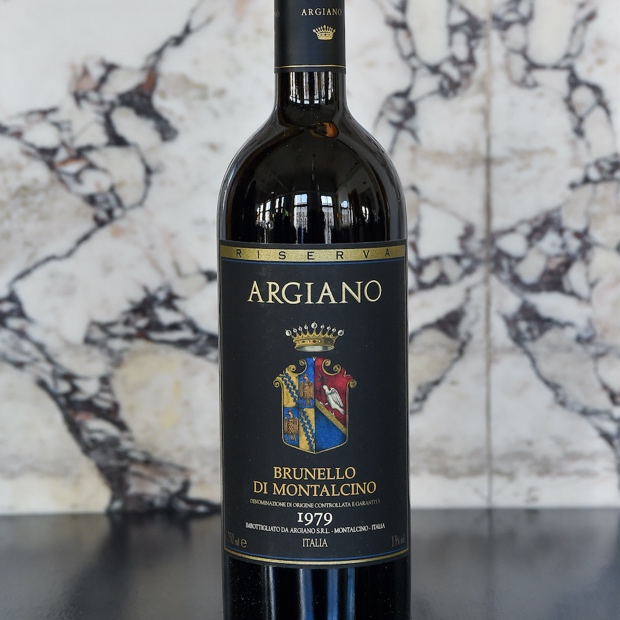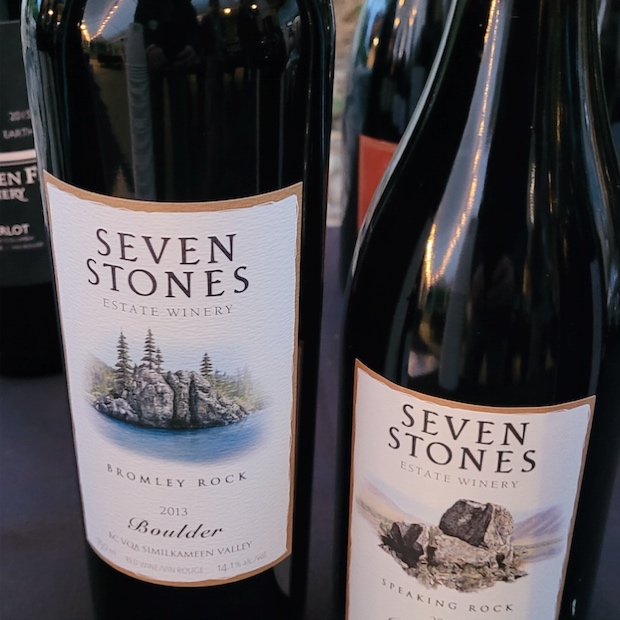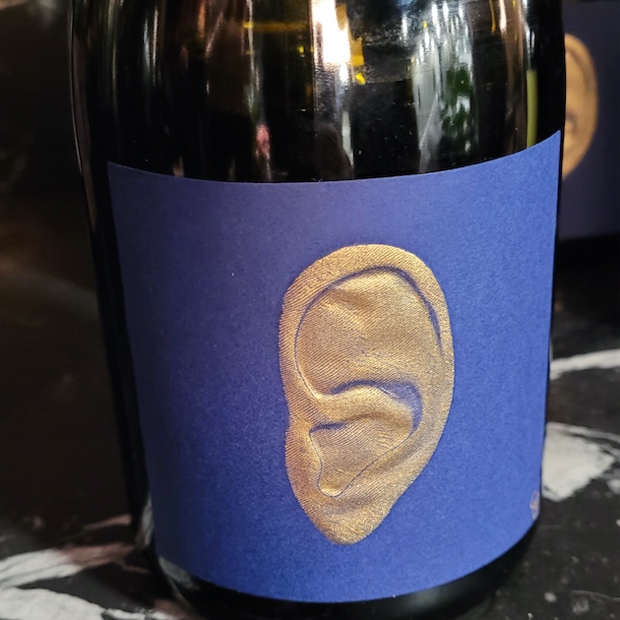This tasting of one of Friuli-Venezia Giulia’s most knowable, respected and consistently worthy white wines is the second of three at Gambero Rosso’s three-day celebrazione weekend for the Guida Vini d’Italia 2022 top wines of Italy. The date is October 15, 2021 and the location inside the Chorus Cafè inside the Auditorium della Conciliazione. Terre Alte, literally “high lands,” obviously speaks to the hills in northeastern Italy but also to loftiness and something connected to a higher calling, as in an “atmosphere of spiritual tranquillity” which would attract an “increasing number of the faithful.” The friulano, sauvignon and pinot bianco that make up Rosazzo Terre Alte are like the cells that bind an abbey together.
Related – Gambero Rosso’s red wine of the year leads a vertical tasting of Argiano’s Vigna del Suolo
Livio Felluga is located in Brazzano, near to the Abbazia di Rosazzo, in the Colli Orientali (eastern hills) of Friuli in an isolated area to the northeast of Manzano, around twenty kilometres from Udine and ten kilometres from the Slovenian border. The origins of the abbey are still not fully known (or at the very lest contentious), but it was built around the year 1000, in Romanesque style and is dedicated to St. Peter the Apostle. Tradition has it that the hermit Alemanno settled in the area in the year 800 to find peace of soul and construct an oratory and a cell. The number of cells increased such that the oratory became a monastery for which Canons Regular of Saint Augustine were called upon to head. In 1070 the church dedicated to Saint Peter was inaugurated. In 1090 the monastery of Rosazzo was elevated to the status of abbey and in the following year Augustinian rule was suppressed and replaced by Benedictine rule.
The family farms 160 hillside hectares in Collio Goriziano and Colli Orientali del Friuli. Now into the sixth generation of the family, third in the family wine business, though when it comes to the Fellugas, the word generational must be regarded in the abstract. Filippo Felluga is Laura’s uncle though they are not many years apart in age, as he was born when his father was 60. There is no actual generational shift or definitive changes of the guard in this family. No real age gaps make for a fluid situation.
Laura Felluga’s grandfather and Filippo’s father Livio started from scratch after the Second World War, releasing the first vintage of his wine, bottled and labeled in 1956. He chose an ancient geological map (during Napoleonic times) as the image for the label. When asked about the adjustments needed and how Terre Alte has adapted over the years, Filippo answers by saying “the way we observe the climate change is with its unpredictability. With each passing year it’s harder to foresee what is going to happen.” In other words, the vines and the blend do so holistically, automatically, without any real human interference. Nature and a connection to place are what makes Terre Alte.
The Livio Felluga vertical tasting includes 1996, 1998, 2001, 2006, 2011, 2014 and the White Wine of the Year Livio Felluga Rosazzo Terre Alte 2018. Once again it is Marco Sabellico of Gambero Rosso’s tasting team that leads the event. Grazie ancora for this opportunity goes out to Luigi (Gigi) Salerno (CEO/GM), Paolo Cuccia (President), Marco Sabellico and Gianni Fabrizio (Authors, Editors and Curators of Vini d’Italia guide), Tiina Eriksson (International Business & Event Manager), Lorenzo Ruggeri (Author and International Editor), Michela Ricotta, Giuseppe Carrus (Author and co-editor of the Gambero Rosso Vini d’Italia guide) and Crystel Barkany. If it carries the name Felluga you can be sure the wines will age gracefully for 25 years. A great pleasure to taste this vertical. Grazie Filippo e Laura Felluga with the team at Gambero Rosso. These are the eight vintages and my tasting notes.
Livio Felluga Rosazzo Terre Alte DOCG 2018
A remarkable combination of salty and fresh, airy, part hillside and then winds blowing in, mainly from the northeast, through the wine. This combination of friulano, sauvignon and pinot bianco carries a rare combination of light dancing upon sweeping feet and veritable oily richness. Hints at smoulder, flintiness and therefore adds up to complexity and fascination. The gentle linger is seemingly forever to tell us much about history, location and possibility. So soft spoken, not surprising considering the ease and what Filippo calls “the boredom” of the vintage. Drink 2021-2028. Tasted October 2021
Livio Felluga Rosazzo Terre Alte DOCG 2014
Marl and sandstone, flesch and ponca soils, rainfall, winds and position within the Goriziano hills make for a complex weave of saltiness and flesh, here more of the former in a three-part harmonic blend of friulano, sauvignon and pinot bianco. “Our area is a champion of diversity,” tells Laura Felluga, “geographically, economically and culturally.” This idea includes grape varieties, “and our mission is to nurture the stories, values and diversity.” And so a synergistic white blend that does all that, felt with sapidity and emotion. Lots of similarity with 2018, likely more than any two vintages. Incredible youth. A fountain. Drink 2021-2025. Tasted October 2021
Livio Felluga Rosazzo Terre Alte DOCG 2011
An oily and textural vintage, surely fleshed out by time yet there’s more than just that. It just had to be ripe, bold and spicy from the beginning, golden sunshine filled, hued and expressive. You feel the aging here but not necessarily the flint and smoulder. Very friulano it would seem, less so pinot bianco though perhaps a little bit of faux botrytis involved, sensed by grapefruit and tropical fruit inherent. And so ultimately a sauvignon vintage in many respects. Drink 2021-2023. Tasted October 2021
Livio Felluga Rosazzo Terre Alte DOCG 2010
Though only a year apart, 2010 and 2011 are night and day, just like that. The saltiness and sapidity are at the fore and though it is not without flesh, glück and Brazzano blood, the linear quality is what still drives the white blend. Thanks to or because of September rains, aromatic intensity, spiciness on the back palate and a singular style of charm draws you in, wraps around your finger and tongue, lays there for a good long time. Lively, savoury and far from done. Drink 2021-2025. Tasted October 2021
Livio Felluga Rosazzo Terre Alte DOCG 2006
While spiced to the hilt this is a blend showing its age but perhaps even more so the style of the early to mid-decade ways. Tiring now, oxidative, orange peel and anise, acidity still alive but the fruit wanes. Feels like the alcohol is elevated and as such there is some heat on the finish. Certainly a factor of August harvesting that really began starting in 2003. Drink 2021. Tasted October 2021
Livio Felluga Rosazzo Terre Alte DOCG 2001
It may just be the diversity of massal selection friulano that brings the plethora of character to the table and to express the complexity and culture of the area. The Felluga mantra is repeated. “We believe this is part of our duty, to nurture the diversity of the area.” A most unique vintage, clearly warm but other than spice and nuts there is no further distraction. Not by alcohol or density, nor undue viscosity neither. Shows a lemon brûlée to poached pear fruit character, mostly replaced by rendered spice and liqueur, with mild acidity and good balance. Drink 2021-2022. Tasted October 2021
Livio Felluga Rosazzo Terre Alte DOCG 1998
A wine in which the switch has been flicked at least five times, at least three past the family’s preference but let’s be frank. This is a fascinating Friuli-Venezia-Giulia wine to taste. Oxidative in the most beautiful way, sapid and laden with 23 year-old tang. Very much a young adult of confidence and swagger borne out of phenolic fruit maturation. A long-hanging vintage, a note of botrytis, a late harvest sensation but truly salty, mineral and showing the biodiversity in clones and vineyards that one would expect a white blend of this ilk to display. Just a terrific example of friulano, sauvignon and pinot bianco in their arena of characterful array. Drink 2021. Tasted October 2021
Livio Felluga Rosazzo Terre Alte DOCG 1996
Was Filippo’s first year in the cellar and at a time with very little wood, lots of bâtonnage and a wine that was kept “dirty” for an extended amount of time. An oily wine to be sure, no shock considering the age and the sauvignon character really stands out. Very citrus, lemon preserve, a touch of salt and some bitter phenolics. Leads to a special kind of character with this sort of botanical, gingered nuttiness at the finish. Freshness, smokiness and minerality at its 25 year-old finest. Drink 2021-2023. Tasted October 2021
Twitter: @mgodello
Instagram: mgodello






























































